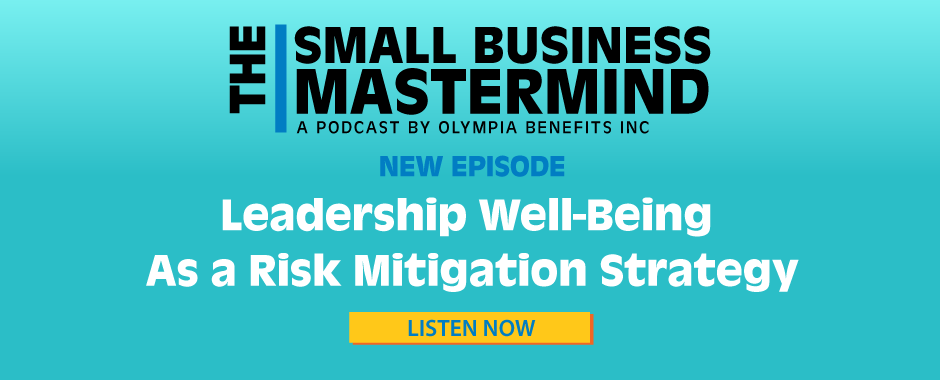In our recent podcast episode with Rick Tidemann, of Copeman Healthcare Centres, we explored the topic of leadership well-being. Rick discussed 3 components that make up an effective leadership well-being program. In this article, we'll explain the 3 components and provide examples of how you can implement them into your own program.
Throughout this article we have placed in clips from this podcast episode to quickly explain the concepts. If you'd like to view more clips like these, they can be found on our YouTube channel.
1. Get an Annual Health Assessment
- Get an annual health assessment done by a doctor or healthcare team
- Ensure the health assessment has a prevention and early detection component
- Make your health assessment a priority
As Rick Tiedemann of Copeman Healthcare Centres explains on our podcast episode, Leadership Well-Being As a Risk Mitigation Strategy:
"The first component would be an annual health assessment that has a prevention and an early detection orientation. It's vital that you have that prevention and early detection component because that allows us to identify emerging health issues at the earliest possible moment. Then, we have a lot more levers to work with to get it back on track again."
2. Have a Plan for Health Issue Resolution
- After your assessment, if a health issue is identified, prioritize resolutions
- Stick to the plan you and your doctor or healthcare team come up with
- Follow-up as needed
Rick Tiedemann explains:
"You need a second component to the program which is health issue resolution. You can well imagine that if I have a fairly stressed-out executive or business owner come in [to the healthcare centre] and we do an assessment and we identify health issues, if they don't have options available to them to resolve the health issues, now, they're just more stressed out.
The goal of any good leadership well-being program should be to optimize the health and performance of leaders. So, if I have a stressed-out executive that now knows they have health issues and can't get them resolved, that's not achieving the goal that we want. So, the second step is to make sure whatever provider that you partner with has a health issue resolution phase so any issues identified can, in fact, be resolved. Now, we're getting healthier leaders and higher-performing leaders which is important."
3. Behave like a Corporate Athlete
- Focus on energy recovery
- Work in "executive intervals" (50 minutes on, 10 minutes to recover)
- Take vacations
- Relax on weekends
- Be careful about over-consuming food or alcohol
- Stop multitasking and start to "monotask"
- If you're feeling burned-out, stick to a bed time even on weekends
Rick Tiedemann explains:
"In The Harvard Business Review, Jim Loehr and Tony Schwartz wrote an article called "The Making of the Corporate Athlete." What they so astutely recognized when they started looking at business owners and business leaders was that they were very linear individuals.
What I mean by linear and what they meant by linear was that these business owners and leaders were very good at energy exertion but they were atrocious at energy recovery.
If you think about the best of the best in the athletic world, they do something called interval training. During those intervals, they have unbelievable dedication towards great nutrition and sleep hygiene because they know it's during these intervals where they actually get stronger.
What we really need our business owners and business leaders and executives to be doing is to start doing executive intervals.
An interval during the day may look like doing a 50-minute hour. I monotask for 50 minutes and then, I take a 10-minute break. There, I might do a little bit of exercise at my desk. I might do a little bit of mindfulness. Because I've had 50 minutes of exertion, I'm going to take 10 minutes of recovery.
But we need bigger intervals than that ultimately. That's where vacations and weekends come in. Now, when I talk about a weekend or a vacation, a vacation isn't just working from some other place."
When used together, these 3 components are intended to help a business owner or business leader improve their health, and ultimately de-risk their business. A focus on wellness is particularly important for a small business owner or leader because if they are unable to come in to work, it can have a dramatic impact.
Learn more about leadership well-being and how it de-risks your business:
